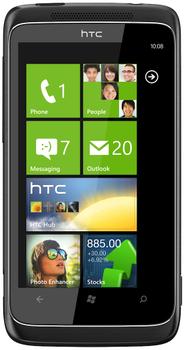A new hope
Another month, another mobile operating system. Having had a leisurely play with an Android and a Symbian phone recently, I switched my attention to Windows Phone 7, having got hold of one from our helpful friends at Vodafone.
Just as with the Nokia N8, the launch of Microsoft's brand new mobile operating system is a matter of profound significance to its maker. Microsoft used to have a fairly healthy chunk of the smartphone market with Windows Mobile, but when the iPhone came along it was exposed as being a clunky, fiddly shrink of full Windows, rather than a true mobile OS.
The ascendance of Android, as well as the presence of other specialized mobile OSs like Palm's webOS, served to further emphasize how last millennium Windows Mobile was - much in the same way as Symbian is still being derided - and Microsoft realized it had to go back to the drawing board.
Many people thought inertia, hubris and internal politics would prevent Microsoft being able to produce a brand-new OS in any kind of reasonable time-frame. And after the mess that was Windows Vista, who could blame them? But to Microsoft's credit it has not only delivered on time, but has produced an OS that deserves to be on the shelves with all the other smartphones.
But while WP7 is a good effort, its main competitors - Apple's iOS and Google's Android - have a decent head start on it. Having said that, Microsoft can still claim to have stolen a march on the other two major players in the smartphone market that run their own OSs - Nokia and RIM - with their software also in need of an overhaul.
In fact Microsoft is also stuck in the middle when it comes to overall strategy. In theory, like Android, anyone can license WP7 and put it onto a phone, but Microsoft requires quite a close relationship with an OEM before it will embrace it to the WP7 bosom, and not all former partners, such as Motorola, have chose to join the gang.
Ironically it's Android that has become the Windows of Mobile, with any OEM at liberty to install it on seemingly any device, while Microsoft has opted for much more control over the hardware side of things. The two approaches may end up a lot closer together, as Google is already showing signs of dictating the optimized Android tablet platform, and Microsoft may start to chill out a bit once WP7 has proven itself in the field.
But for now, the phones all have to run the vanilla Qualcomm Snapdragon - QSD 8x50 - and must all have three ‘hard' buttons: back, home and search. A lot of Android phones add a ‘menu' button to those, and it often comes in handy.
Anyway, I'm getting into the specifics now, so might as well stop setting the scene and get on with a look at the hardware. Incidentally, I know one of my colleagues has also written about a WP7 phone, but I've deliberately avoided reading it in order to not be influenced by it.



